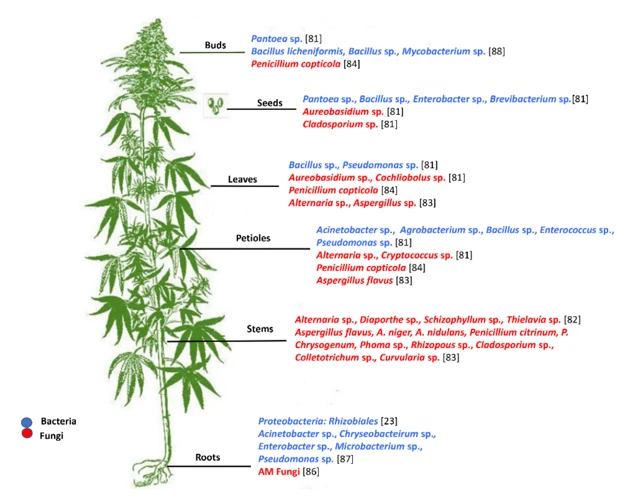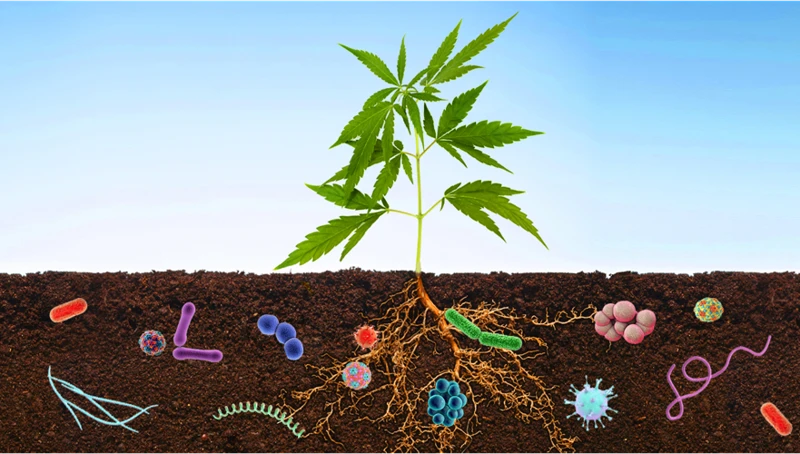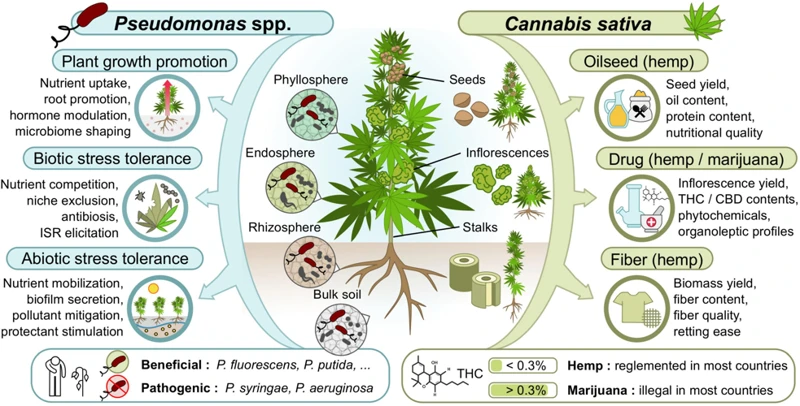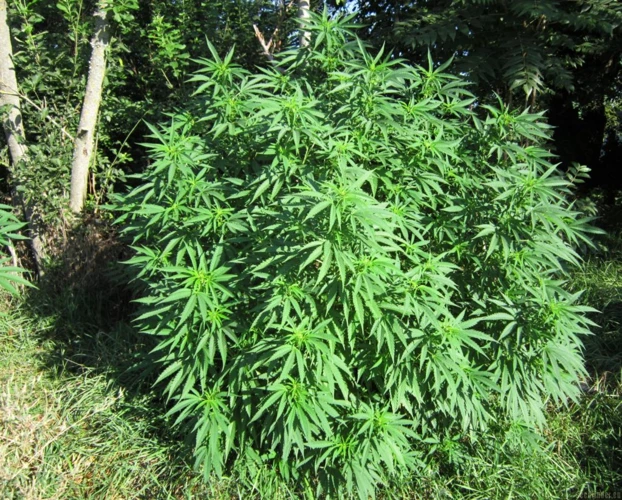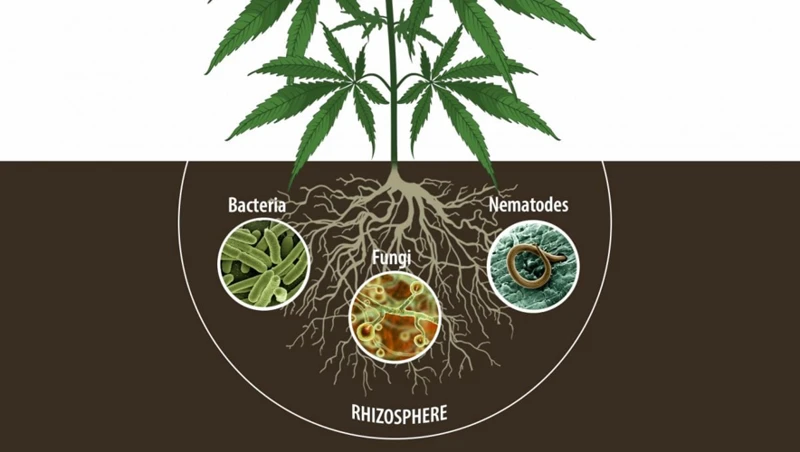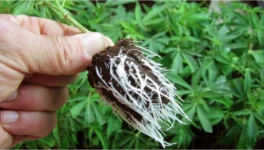
Beneficial Fungi and Nutrient Uptake for Cannabis Plants
As the cultivation of cannabis plants becomes more commonplace and regulated, growers have become increasingly interested in effective techniques to enhance their crops’ growth and yield. One key factor in a plant’s success is its ability to absorb essential nutrients from the soil. However, this process can often be impeded by various factors such as soil quality or external stressors. Recently, there has been growing research into the role of beneficial fungi in promoting nutrient uptake in cannabis plants. In this article, we will explore the benefits, working mechanisms, and how-to guide in introducing beneficial fungi to your cannabis plants.
The Importance of Nutrient Uptake for Cannabis Plants
Contents
When it comes to growing cannabis plants, one of the most critical factors for ensuring a healthy and robust crop is proper nutrient uptake. Without the right balance of essential nutrients, cannabis plants may fail to develop to their full potential, leading to stunted growth, reduced yield, and a low-quality harvest. Understanding which nutrients are essential for cannabis plants and how they absorb them can help growers optimize their cultivation techniques and maximize their results. Let’s delve into the crucial role that nutrient uptake plays in the growth of cannabis plants.
What are the essential nutrients for cannabis plants?
Cannabis plants require a range of essential nutrients for their healthy growth and development. These nutrients can be broadly classified into two categories: macronutrients and micronutrients. Macronutrients are those that the plant needs in large amounts, while micronutrients are those required in smaller quantities. Here are some of the essential nutrients that cannabis plants need:
| Nutrient | Symbol | Function |
|---|---|---|
| Nitrogen | N | Helps in the growth of leaves and stems, and contributes to the formation of chlorophyll. |
| Phosphorus | P | Stimulates the development of roots, flowers and fruits, enhances photosynthesis, and contributes to cell division and energy transfer. |
| Potassium | K | Facilitates photosynthesis, regulates water use, regulates stomata opening and closing, enhances resistance to pests and diseases, and increases the size and quality of buds. |
| Calcium | Ca | Helps to build strong cell walls, enhances root development and nutrient uptake, and aids in the transmission of signals within the plant. |
| Magnesium | Mg | Forms the central molecule of chlorophyll, supports photosynthesis, and aids in the metabolism of carbohydrates and proteins. |
| Sulfur | S | Contributes to the formation of amino acids and proteins, supports chlorophyll synthesis, and enhances bud development and flavor. |
| Iron | Fe | Facilitates chlorophyll production, aids in the transfer of oxygen, helps to retain water in cells, and supports root development. |
| Zinc | Zn | Helps to regulate growth hormones, contributes to chlorophyll formation, and enhances root development and stress resistance. |
| Manganese | Mn | Facilitates chlorophyll synthesis, aids in the formation of enzymes, and enhances root development and nutrient uptake. |
| Boron | B | Contributes to cell wall formation, facilitates nutrient absorption and transport, and enhances the growth of flowers and fruits. |
| Copper | Cu | Aids in the formation of enzymes, supports chlorophyll synthesis, and enhances stress resistance and nutrient uptake. |
Ensuring that cannabis plants receive adequate amounts of these essential nutrients is crucial for their overall health and productivity. Any deficiency or excess of these nutrients can result in a range of problems, such as stunted growth, yellowing of leaves, poor yield, or reduced potency. It is essential to maintain a balanced nutrient regimen to ensure optimal growth and development of cannabis plants.
How do cannabis plants absorb nutrients?
Cannabis plants absorb nutrients through their root systems. The roots have tiny hair-like structures called root hairs that increase their surface area, allowing for better absorption of nutrients. The nutrients are absorbed in two ways: actively and passively.
Passive absorption: Nutrients that are present in the soil solution are passively absorbed by the roots. This is because there is a higher concentration of nutrients in the soil solution than in the roots, causing the nutrients to move into the roots by diffusion.
Active absorption: Nutrients that are not present in the soil solution or are present in very low concentrations are actively absorbed by the roots. This is achieved through a process called ion exchange, where the roots pump hydrogen ions (H+) into the soil, which causes the release of positively charged nutrients such as potassium (K+), calcium (Ca2+), and magnesium (Mg2+). The roots then absorb these nutrients through channels called transporters.
It’s important to note that the availability of nutrients in the soil is influenced by various factors such as soil pH, soil moisture, and nutrient interactions. For example, some nutrients like iron (Fe3+) and manganese (Mn2+) become less available in alkaline soils, while others like phosphorus (P) become less available in acidic soils.
Cannabis plants absorb nutrients through their root systems via passive and active absorption mechanisms, which are influenced by factors such as soil pH, soil moisture, and nutrient interactions.
What are Beneficial Fungi?
As cannabis growers and enthusiasts, we are always looking for ways to improve the health and yield of our plants. One such method that has gained popularity in recent years is the use of beneficial fungi. But what exactly are these fungi and how do they help our cannabis plants? Let’s dive into the world of these tiny organisms and explore their benefits in nutrient uptake for cannabis.
Types of Beneficial Fungi for Cannabis Plants
Beneficial fungi are a diverse group of microorganisms that can form symbiotic relationships with cannabis plants, contributing to their growth and development. Here are some types of beneficial fungi that are commonly used for cannabis growing:
- Mycorrhizal fungi – these fungi form mutualistic associations with the roots of cannabis plants, helping them to absorb water and nutrients from the soil. Mycorrhizal fungi can also protect plants from soil-borne pathogens and other stressors. Examples of mycorrhizal fungi that are beneficial for cannabis plants include Glomus intraradices and Rhizophagus irregularis.
- Trichoderma fungi – these fungi are known for their ability to produce enzymes that can break down organic matter in the soil, releasing nutrients that cannabis plants can use. They can also protect plants from fungal diseases by colonizing their root systems and producing antifungal compounds. Examples of Trichoderma fungi that are beneficial for cannabis plants include Trichoderma harzianum and Trichoderma atroviride.
- Endophytic fungi – these fungi live inside the tissues of cannabis plants, without causing any harm. They can help to improve plant growth and resistance to stress by producing natural plant hormones and other growth-promoting substances. Some examples of endophytic fungi that are beneficial for cannabis plants include Fusarium oxysporum and Colletotrichum kahawae.
- Beneficial bacteria-fungi complex – a combination of beneficial fungi and bacteria can create a synergistic effect that is highly beneficial for cannabis plants. This complex can improve nutrient uptake, soil health, and resistance to pests and diseases. A few examples of beneficial bacteria-fungi complex that are beneficial for cannabis plants include Bacillus subtilis and Trichoderma pseudokoningii.
Using beneficial fungi can be an effective way to promote the growth and health of cannabis plants, but it is important to choose the right type of fungi for your specific needs. In the next section, we will discuss the various benefits that these fungi can offer to cannabis plants.
Benefits of Beneficial Fungi for Cannabis Plants
Beneficial fungi are an important part of the ecosystems in which cannabis plants grow naturally. Incorporating these fungi into the soil can bring a variety of benefits that can contribute to better overall plant health and growth.
Here are some of the benefits of using beneficial fungi for cannabis plants:
| Benefits | Explanation |
|---|---|
| Improved nutrient uptake efficiency | Beneficial fungi can help break down nutrients in the soil, making them more available for cannabis plant roots to absorb. This can lead to improved nutrient uptake efficiency, resulting in healthier and more vigorous plant growth. |
| Increased resistance to environmental stress | Beneficial fungi can help improve the overall immune system of cannabis plants by increasing their resistance to environmental stressors. This can include resistance to drought, temperature extremes, and other environmental factors that can negatively impact plant growth and health. |
| Better taste and aroma of cannabis buds | Research has shown that the use of beneficial fungi can result in improved terpene production in cannabis plants. Terpenes are responsible for the unique taste and aroma of different cannabis strains, and improving their production can lead to a more enjoyable and flavorful final product. |
Incorporating beneficial fungi into the soil can offer a number of benefits for cannabis plants. These fungi can help improve nutrient uptake efficiency, increase resistance to environmental stress, and enhance the flavor and aroma of cannabis buds. When choosing a fungal product to use, it is important to consider the specific needs of your plants and to take steps to minimize the risks of infection and contamination.
Working Mechanisms of Beneficial Fungi in Nutrient Uptake for Cannabis Plants
As we delve deeper into the role of beneficial fungi in nutrient uptake for cannabis plants, it is important to understand the working mechanisms of these microorganisms. Beneficial fungi have a unique relationship with the roots of cannabis plants, one that is characterized by mutualistic symbiosis. They not only form a protective barrier around the roots, but also secrete enzymes that help break down organic matter and release essential nutrients that are otherwise unavailable to the plant. In this section, we will explore these mechanisms in detail and shed light on the ways in which beneficial fungi interact with cannabis plants to facilitate nutrient uptake.
Symbiosis with the Roots of Cannabis Plants
Beneficial fungi have a unique ability to establish a mutually beneficial relationship with the roots of cannabis plants, known as symbiosis. In this alliance, the fungi attach themselves to the roots and form a network of fine filaments called mycelium. The mycelium act as extensions of the root system and can penetrate further into the soil than roots alone, enabling the plant to access nutrients that would be otherwise unavailable.
One type of beneficial fungi that is particularly adept at establishing symbiosis with cannabis plants is arbuscular mycorrhizal fungi (AMF). These fungi form specialized structures called arbuscules that facilitate nutrient exchange between the plant and fungi. When the fungus extends its filaments into the soil, it absorbs nutrients such as phosphorus, nitrogen, and potassium, and then delivers them to the plant in exchange for carbon.
The mycelial network created by beneficial fungi provides a physical barrier against soil-borne pathogens and pests, protecting the roots of cannabis plants from damage and disease. This, in turn, enhances the plant’s overall health and ability to uptake nutrients.
The symbiosis between beneficial fungi and cannabis plants is a crucial factor in the plant’s growth and development. The fungi effectively act as an extended root system, enabling the plant to access nutrients, while also providing a protective barrier against harmful pathogens and pests. This results in healthier, more robust plants with improved yields.
| Advantages of Symbiosis with Beneficial Fungi |
|---|
| Access to nutrients such as phosphorus, nitrogen, and potassium that would otherwise be unavailable to the plant |
| The ability to penetrate further into the soil, increasing the surface area for nutrient absorption |
| A protective barrier against soil-borne pathogens and pests |
| Enhanced overall health and development of the cannabis plant |
Secretion of Enzymes to Break Down Nutrients
Beneficial fungi play a crucial role in the nutrient uptake of cannabis plants by secreting enzymes that break down complex nutrients into simpler forms. These simpler forms of nutrients are easier for the plant to absorb and utilize for growth and development.
The enzymes secreted by beneficial fungi are:
- Phosphatases – These enzymes break down phosphorus-containing compounds such as phytate, which is abundant in soil but are not readily available to plants.
- Cellulases – These enzymes break down cellulose to release glucose, which is an essential source of energy for plants.
- Proteases – These enzymes break down proteins into amino acids, which are essential components of plant structure and function.
- Chitinases – These enzymes break down chitin, which is a polysaccharide found in the cell walls of many fungi and in the exoskeletons of insects. By breaking down chitin, chitinases make nitrogen available to the plant.
The breakdown of nutrients by these enzymes:
When the beneficial fungi come into contact with the nutrients in the soil, they secrete these enzymes directly onto the nutrient source. The enzymes then break down the complex nutrients into simpler forms that are easier for the plant to absorb.
For example, the beneficial fungi might come into contact with a piece of organic matter in the soil that contains phosphorus. The fungi then secrete phosphatases, which break down the phosphorus-containing compounds in the organic matter into simpler forms such as phosphate ions (PO4³⁻). These phosphate ions can then be easily absorbed by the cannabis plant for growth and development.
The significance of enzyme secretion by beneficial fungi:
The secretion of enzymes by beneficial fungi is an essential function that helps cannabis plants to access the nutrients they need for optimal growth and development. Without these enzymes, many of the nutrients in the soil would remain unavailable to the plant. Beneficial fungi ensure that the nutrients are converted into a form that the cannabis plant can easily absorb and use, leading to better nutrient uptake efficiency and ultimately, healthier and more productive cannabis plants.
How to Introduce Beneficial Fungi to Your Cannabis Plants
Now that we understand the importance of beneficial fungi in the nutrient uptake process of cannabis plants, the next question is how to introduce these fungi to your plants. There are several methods available, each with its own advantages and disadvantages. It is important to choose the right approach based on the specific needs of your cannabis plants and the growing conditions in your environment. In this section, we will explore the different ways to introduce beneficial fungi to your cannabis plants and provide guidelines on how to choose the right fungal products to maximize their benefits.
Adding Fungal Products to the Soil
One way to introduce beneficial fungi to your cannabis plants is by adding fungal products directly to the soil. Fungal products typically come in two forms: spores and mycorrhizal inoculants.
Spores are dormant fungal cells that can be activated under the right conditions. They are often found in soil, but adding spores to your cannabis plant’s soil can increase the abundance and diversity of beneficial fungi. However, it is important to note that spores may take longer to establish a mutually beneficial relationship with the cannabis plant’s roots compared to other forms of fungal products.
Mycorrhizal inoculants are specifically designed to contain active mycorrhizal fungi that can immediately begin to form a symbiotic relationship with the cannabis plant’s roots. These inoculants can come in various forms, such as granular, powder, or liquid, and can be applied directly to the soil around the cannabis plants. Mycorrhizal inoculants are often recommended for establishing a healthy fungal population in your soil and increasing nutrient uptake efficiency.
Before adding any fungal products to your cannabis plant’s soil, it is important to ensure that the soil is healthy and free of harmful pathogens. It is also important to follow the manufacturer’s instructions for application rates and timings, as over-application of fungal products can lead to negative effects.
Adding fungal products to the soil is a natural and effective way to enhance the beneficial fungal population in your cannabis plant’s root system, leading to improved nutrient uptake and plant health.
| Forms of fungal products | Advantages | Disadvantages |
|---|---|---|
| Spores | -Can increase abundance and diversity of beneficial fungi -May already be present in soil |
-May require more time to establish relationship with roots -Quality and quantity of spores can vary |
| Mycorrhizal inoculants | -Contains active mycorrhizal fungi for immediate symbiotic relationship -Available in various forms for easy application |
-Over-application can lead to negative effects -May not contain diverse range of fungal strains |
Applying Fungicides and Antibiotics
When it comes to applying fungicides and antibiotics to cannabis plants, it is important to exercise caution and follow the proper protocols. These substances can be effective in fighting harmful pathogens that can damage your plants, but if used improperly, they may also harm beneficial fungi and disrupt the delicate balance of the soil ecosystem.
Here are some tips to follow when using fungicides and antibiotics on your cannabis plants:
- Identify the Problem: Before applying any chemical solutions, it is important to properly diagnose the problem with your plants. This can help you choose the best course of treatment and avoid unnecessary damage to your plants and soil.
- Choose the Right Product: Different fungal and bacterial pathogens require different types of treatments. It is important to choose the right product to eliminate the specific problem you are facing. Be sure to read the labels carefully and follow the recommended application rates and methods.
- Limit the Use of Chemicals: While fungicides and antibiotics can be effective in treating plant infections, they should only be used as a last resort. Limit the use of chemicals on your cannabis plants to prevent the development of resistance or harm to beneficial fungi in your soil.
- Use Protective Gear: When handling and applying chemical treatments, it is important to use protective gear such as gloves, masks, and goggles to avoid skin or eye irritation.
- Follow Application Guidelines: To ensure the effectiveness of your treatments, it is important to follow the application guidelines provided on the label. This includes applying the recommended amount of product, treating at the recommended intervals, and timing applications correctly.
- Observe Plant Response: After applying fungicides and antibiotics, it is important to observe your plants for any unusual growth patterns or signs of damage. If you notice any negative effects, stop using the product and consult with a professional before continuing treatment.
By following these tips, you can effectively use fungicides and antibiotics to treat plant infections while minimizing harm to beneficial fungi and maintaining a healthy soil ecosystem for your cannabis plants to thrive.
How to Choose the Right Fungal Products for Your Cannabis Plants
When it comes to choosing the right fungal products for your cannabis plants, several factors should be taken into consideration. The type of fungus, its compatibility with cannabis, and the mode of application are some of the essential factors that will determine the success of your cultivation.
Below are some key points to help you choose the right fungal products for your cannabis plants:
Type of Fungus: Different fungi play different roles and offer distinct benefits to cannabis plants. For instance, mycorrhizal fungi form a symbiotic relationship with the plant roots, increasing nutrient uptake and protecting against pathogens. Trichoderma, on the other hand, act as biopesticides, fighting off harmful fungi and bacteria in the soil. It’s crucial to understand the role of each fungus and choose the one that best suits your cannabis cultivation goals.
Compatibility: Not all fungal strains are suitable for cannabis plants. Some may even cause harm, causing root rot or leaf necrosis. It’s essential to check the compatibility of the fungus with cannabis before introducing it to your plants. A reputable supplier should have this information available.
Mode of Application: Fungal products can be applied in various ways, including as soil drenches, root dips, and foliar sprays. The mode of application will largely depend on the type of fungus, the stage of plant growth, and the severity of the problem you’re trying to solve. Be sure to read the product label carefully and follow the instructions to avoid overuse or misuse of the product.
Cost: Different fungal products have varying prices, which may depend on the brand, the type of fungus, and the quantity. While cost should not be the sole determinant factor when choosing the right fungal product, it’s crucial to consider it, especially if you’re on a budget.
Choosing the right fungal products for your cannabis plants requires careful consideration of several crucial factors. Understanding the role of each fungus, its compatibility with cannabis, the mode of application, and the cost will help you make an informed decision and achieve successful cultivation.
Benefits of Using Beneficial Fungi for Your Cannabis Plants
One of the most effective ways to improve the growth and health of your cannabis plants is by incorporating beneficial fungi into your cultivation process. These tiny organisms form a symbiotic relationship with the roots of your plants, helping them to absorb essential nutrients from the soil. But the benefits of using beneficial fungi for your cannabis plants don’t stop there. In this section, we’ll explore the various advantages that these fungi offer, including improved nutrient uptake efficiency, increased resistance to environmental stress, and better taste and aroma of your cannabis buds. Let’s dive in and take a closer look at what these fungi can do for your cannabis plants!
Improved Nutrient Uptake Efficiency
Using beneficial fungi in the growth of cannabis plants can significantly improve the nutrient uptake efficiency. This occurs due to the symbiotic relationship between the roots of cannabis plants and the beneficial fungi.
Table: Comparison of Nutrient Uptake Efficiency with and without Beneficial Fungi
| Nutrient | Uptake Efficiency without Beneficial Fungi | Uptake Efficiency with Beneficial Fungi |
| — | — | — |
| Nitrogen | Low | High |
| Phosphorus | Low | High |
| Potassium | Low | High |
| Iron | Low | High |
As shown in the table, the uptake efficiency without beneficial fungi is low for all essential nutrients, including nitrogen, phosphorus, potassium, and iron. This means that the cannabis plant may not be able to absorb these nutrients effectively, even if they are present in the soil.
On the other hand, when beneficial fungi are present, the uptake efficiency of these essential nutrients is significantly improved. The symbiotic relationship between the roots of cannabis plants and the beneficial fungi allows for better absorption of these nutrients.
Beneficial fungi also contribute to soil health by breaking down organic matter, which releases additional nutrients for the cannabis plants to absorb. In this way, introducing beneficial fungi to the soil can not only improve the nutrient uptake efficiency of cannabis plants but also enhance overall soil health.
The use of beneficial fungi can improve the nutrient uptake efficiency of cannabis plants, leading to healthier and better yielding crops.
Increased Resistance to Environmental Stress
Beneficial fungi are known to help cannabis plants handle various environmental stresses such as drought, extreme temperatures, and exposure to pests and diseases. These stresses can cause a lot of damage to the plants and can even lead to decreased yields or complete failure of the crop. However, with the help of beneficial fungi, cannabis plants can increase their resistance and tolerance to these environmental stressors.
How does it work?
Beneficial fungi help cannabis plants withstand environmental stress by promoting a more robust and efficient nutrient uptake. This leads to healthier plants with enhanced metabolic functions that are better equipped to resist the negative effects of stress. The fungi form a symbiotic association with the roots of the cannabis plants, allowing them to improve the root system’s overall structure and function. As a result, the roots can absorb water and nutrients from the soil more efficiently, making the plants more resistant to drought.
The fungi also help cannabis plants withstand extreme temperatures. They do this by producing compounds that act as heat or cold shock proteins, which helps plants acclimate to changes in temperature. Additionally, beneficial fungi help cannabis plants resist the effects of pests and diseases. By introducing beneficial fungi into the soil, an entire community of microbes can be established, which competes with harmful pathogens for resources and space.
Benefits of Increased Resistance to Environmental Stress
By increasing the resistance of cannabis plants to environmental stressors, growers can benefit in several ways. For one, the plants are less likely to experience yield loss or failure, resulting in higher crop yields. Additionally, healthier, more resilient plants can lead to increased potency and better overall quality of the final product.
Table: Benefits of Increased Resistance to Environmental Stress
| Benefits | Description |
|---|---|
| Reduced Yield Loss | Cannabis plants are less likely to experience yield loss or failure due to environmental stresses such as drought or extreme temperatures. |
| Improved Quality of Final Product | Healthier, more resilient plants can lead to increased potency and better overall quality of the final product. |
Conclusion
The use of beneficial fungi can have a significant impact on the resistance and tolerance of cannabis plants to environmental stressors. By establishing symbiotic relationships with the roots of the plants, beneficial fungi can improve the overall health and function of the root system, resulting in more resilient and better-performing plants. With increased resistance to environmental stress, growers can achieve higher crop yields and better-quality cannabis products.
Better Taste and Aroma of Cannabis Buds
One of the lesser-known benefits of using beneficial fungi in cannabis cultivation is the impact it can have on the taste and aroma of the final product. Cannabis plants that have a healthy and diverse microbiome in their root zone tend to produce stronger and more complex flavors and aromas. This is due to the fact that beneficial fungi can help plants absorb and process a wider variety of nutrients and trace elements, which in turn can affect the chemical composition of the plant itself.
Here are some specific ways in which fungi can enhance the taste and aroma of cannabis buds:
- Increased terpene production: Terpenes are the aromatic compounds in cannabis that contribute to its distinct smell and taste. Beneficial fungi can help stimulate the production of terpenes in plants by providing them with a more diverse range of nutrients and minerals. This can result in stronger and more complex aromas and flavors.
- Better nutrient uptake: When cannabis plants have access to a broad spectrum of nutrients, they are better equipped to produce the compounds that give them their unique taste and aroma profiles. Beneficial fungi can help plants absorb a wider range of nutrients, which in turn can lead to a more nuanced flavor and aroma profile.
- Reduced stress: When plants are stressed due to environmental factors such as high temperatures, drought, or pests, they may produce compounds that can affect their flavor and aroma in negative ways. Beneficial fungi can help plants cope with stress better by providing them with protective compounds and enzymes that can help them maintain their flavor and aroma even in challenging conditions.
Incorporating beneficial fungi into your cannabis cultivation can have a significant impact on the quality of your final product. By enhancing nutrient uptake and reducing stress, fungi can help plants produce stronger, more complex, and more enjoyable flavors and aromas.
Precautions When Using Beneficial Fungi for Cannabis Plants
As beneficial fungi are becoming increasingly popular in optimizing the growth of cannabis plants, it’s important to be aware of the potential risks and precautions that must be taken. Despite their numerous benefits, improper use of fungal products can lead to contamination and infection, which can severely damage the health of your plants. It is crucial to observe proper precautions to mitigate the risks associated with using beneficial fungi for your cannabis plants. In this section, we will highlight the precautions that must be taken when using beneficial fungi to ensure the healthy growth of your cannabis plants.
Minimizing the Risks of Infection and Contamination
When using beneficial fungi for your cannabis plants, it is crucial to minimize the risks of infection and contamination. This can be achieved through various measures, including maintaining proper hygiene and sanitation practices, using high-quality fungal products, and monitoring your plants regularly for any signs of disease or pests. Here are some steps you can take to minimize the risks of infection and contamination:
| Step | Description |
| Clean and sterilize | Clean and sterilize all equipment used for handling fungal products, including gloves, pots, and tools. This will help prevent the spread of harmful bacteria, fungi, and viruses. |
| Choose high-quality products | Choose fungal products from reputable suppliers that have been tested for purity and efficacy. Avoid using products that are past their expiration date or have not been stored properly as they may be ineffective or contaminated. |
| Monitor plant health | Regularly monitor your cannabis plants for any signs of disease, pests, or stress. Early detection can help prevent the spread of infection and increase the chances of successful treatment. |
| Practice crop rotation | Rotate your crops and avoid planting cannabis in the same soil for consecutive seasons. This can reduce the risk of soil-borne diseases and pests, including those that may affect beneficial fungi. |
| Avoid overuse | Avoid overusing fungal products as this can lead to an imbalance in the soil ecosystem and increase the risk of contamination. Follow the recommended dosage and frequency of application provided by the product manufacturer. |
By following these measures, you can minimize the risks of infection and contamination when using beneficial fungi for your cannabis plants. It is important to remember that prevention is key, and taking proactive steps to maintain plant health and prevent the spread of disease can lead to a more successful and bountiful harvest.
Preventing Overuse or Misuse of Fungal Products
Overusing or misusing fungal products can have negative consequences on the health and growth of cannabis plants. It’s important to follow guidelines and directions when using these products. Here are some tips to prevent overuse or misuse:
| Tip | Description |
| 1. | Do not apply more than the recommended dosage of fungal products, as this can lead to excess growth of fungi, which can harm the roots and reduce nutrient uptake efficiency. |
| 2. | Choose the right type of fungal product for the specific needs of your cannabis plants, based on their stage of growth and nutrient requirements. |
| 3. | Avoid using fungicides and antibiotics excessively, as this can kill beneficial fungi and other microorganisms in the soil, leading to imbalances in the soil microbiome and reduced overall plant health. |
| 4. | Monitor the growth and health of your cannabis plants regularly, and adjust your use of fungal products accordingly, based on their response to the treatment. |
| 5. | Store fungal products in a cool, dry, and dark place, away from direct sunlight, moisture, and heat, to prevent contamination and degradation of their potency. |
| 6. | Clean and sterilize all gardening tools and equipment before and after use, to minimize the risk of spreading fungal spores and other pathogens among plants. |
By following these precautions, you can ensure that your cannabis plants benefit from the use of beneficial fungi, without risking their health or growth potential.
Conclusion
In conclusion, it is clear that the use of beneficial fungi can have numerous benefits for the growth and health of cannabis plants. Through their mechanisms of symbiosis with plant roots and secretion of enzymes to break down nutrients, these fungi can greatly enhance the efficiency of nutrient uptake and increase resistance to environmental stressors.
However, it is important to exercise caution when introducing fungal products to cannabis plants. It is crucial to choose the right products for your specific plant and to follow proper application techniques to prevent the risk of infection or contamination.
Additionally, it is essential to avoid overuse or misuse of fungal products, as this could lead to negative effects on plant growth and health. By following these precautions, growers can maximize the benefits of using beneficial fungi for their cannabis plants.
Overall, incorporating beneficial fungi into your cannabis growing regimen can lead to improved nutrient uptake efficiency, increased resistance to environmental stress, and better taste and aroma of the resulting buds. So why not give it a try and see the results for yourself?
Frequently Asked Questions
What are the benefits of using beneficial fungi for cannabis plants?
Using beneficial fungi can improve nutrient uptake efficiency, increase resistance to environmental stress, and enhance the taste and aroma of cannabis buds.
Cannabis plants require various essential nutrients, including nitrogen, phosphorus, potassium, calcium, magnesium, sulfur, iron, manganese, boron, zinc, copper, and molybdenum.
Cannabis plants absorb nutrients through their root system. The nutrients dissolve in water and are taken up by the roots through osmosis.
What are some common types of beneficial fungi for cannabis plants?
Common types of beneficial fungi for cannabis plants include mycorrhizae, trichoderma, and various species of endophytes and saprophytes.
How do beneficial fungi help with nutrient uptake for cannabis plants?
Beneficial fungi can help with nutrient uptake by forming a symbiotic relationship with the roots of cannabis plants, secreting enzymes to break down nutrients, and improving soil structure and water retention.
What are some precautions to take when using beneficial fungi for cannabis plants?
Precautions include minimizing the risks of infection and contamination, preventing overuse or misuse of fungal products, and choosing the right products for your specific needs and growing conditions.
Can beneficial fungi be used in hydroponic setups?
Yes, beneficial fungi can be used in hydroponic setups. Products such as mycorrhizal inoculants can be added directly to the water or nutrient solution.
Can beneficial fungi be used in conjunction with fertilizers and other nutrients for cannabis plants?
Yes, beneficial fungi can be used in conjunction with fertilizers and other nutrients for cannabis plants. In fact, they can help enhance the effectiveness of these products.
Do different strains of cannabis plants require different types of beneficial fungi?
While some strains may have slightly different preferences, most cannabis plants will benefit from similar types of beneficial fungi. However, it’s important to choose products that are specifically designed for cannabis cultivation.
Are there any negative side effects of using beneficial fungi for cannabis plants?
If used properly, there are typically no negative side effects of using beneficial fungi for cannabis plants. However, overuse or contamination can lead to issues such as root rot or other infections.

